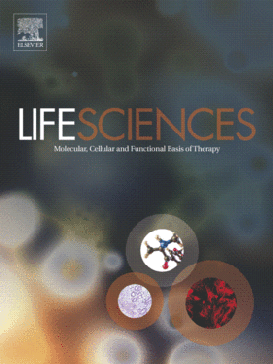
“We have shown previously that the cannabinoid receptor agonist CP55940 microinjected into the paraventricular nucleus of the hypothalamus (PVN) of urethane-anaesthetized rats induces depressor and pressor cardiovascular effects in the absence and presence of the CB1 antagonist AM251, respectively. The aim of our study was to examine whether the hypotension and/or hypertension induced by CP55940 given into the PVN results from its influence on glutamatergic and GABAergic neurotransmission. CP55940 was microinjected into the PVN of urethane-anaesthetized rats twice (S1 and S2, 20 min apart). Antagonists of the following receptors, NMDA (MK801), β2-adrenergic (ICI118551), thromboxane A2-TP (SQ29548), angiotensin II-AT1 (losartan) or GABAA (bicuculline), or the NO synthase inhibitor L-NAME were administered intravenously 5 min before S2 alone or together with AM251. The CP55940-induced hypotension was reversed into a pressor response by AM251, bicuculline and L-NAME, but not by the other antagonists. The CP55940-induced pressor effect examined in the presence of AM251 was completely reversed by losartan, reduced by about 50-60 % by MK801, ICI118551 and SQ29548, prevented by bilateral adrenalectomy but not modified by bicuculline and L-NAME. Parallel, but smaller, changes in heart rate accompanied the changes in blood pressure. The bi-directional CB1 receptor-mediated cardiovascular effects of cannabinoids microinjected into the PVN of anaesthetized rats depend on stimulatory glutamatergic and inhibitory GABAergic inputs to the sympathetic tone; the glutamatergic input is related to AT1, TP and β2-adrenergic receptors and catecholamine release from the adrenal medulla whereas the GABAergic input is reinforced by NO.”







.jpg)
